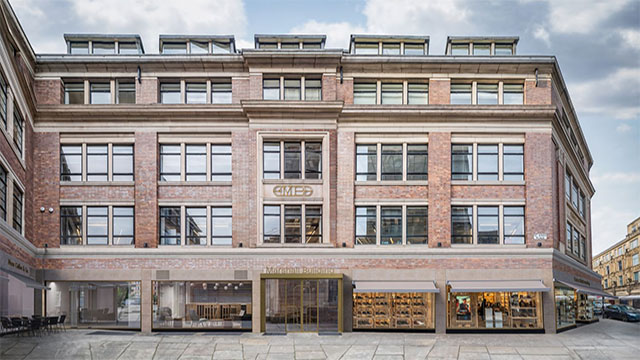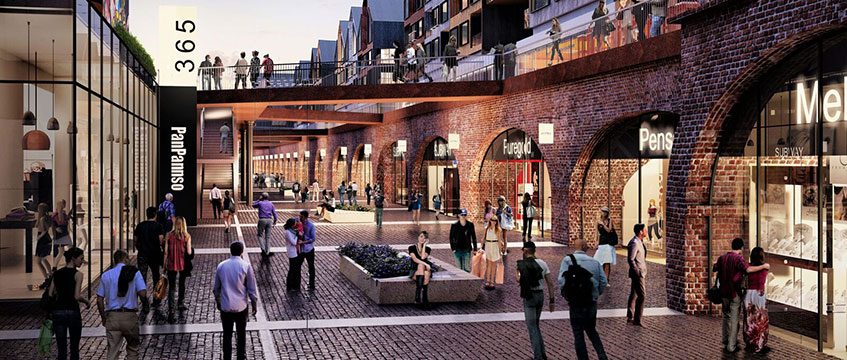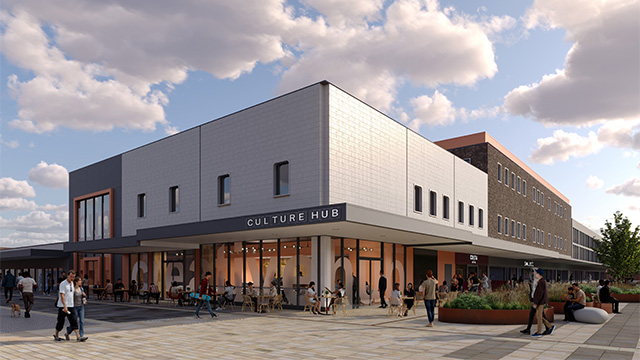This week, Ballymore and Hammerson launched revised proposals for the regeneration of Bishopsgate Goodsyard.
These proposals would create The Goodsyard, a 10 acre, mixed-use urban quarter in Shoreditch, E1, but with a focus on lower building heights, flexible workspace and the creative industries.
Plans for the site have been in train since 2014, but the previous planning application was called in by Boris Johnson, then mayor of London, the following year. In 2016, the Greater London Authority recommended that permission should be refused.
EG spoke to Hammerson development manager Tony Coughlan and Ballymore senior development manager Nicola Zech-Behrens, about the challenges of bringing the scheme to fruition.
Estates Gazette: Why have the number of flats been reduced down so dramatically?
Tony Coughlan: We have been working closely with the GLA and boroughs to address concerns about the existing application, which have centred on the height and density of the buildings and their daylight/sunlight impact.
This site remains one of the most constrained brownfield sites in London. To include a significant number of homes, it would be necessary to build tall, including over the London Overground Station box. Our revisions to bring down the heights of the buildings, especially at the eastern end of the site along Sclater Street, inevitably means there is a reduction in the number of homes.
Our updated proposals still look to optimise our residential provision, but at a scale that is in keeping with the current streetscape. We are now proposing up to 250 homes, at least 35% of which will be on-site affordable. Our revised proposals retain a mix of uses including workspace, studios and affordable office space, to enhance Shoreditch’s status as a dynamic international hub for tech and creative industries.
EG: To what extent has the performance of the London residential market had an impact on your thinking?
Nicola Zech-Behrens: What has driven the revisions is the feedback we have received on the existing planning application, and the constructive conversations we have had with the GLA, the boroughs, and other stakeholders. This is a long-term development that will be phased over many years.
EG: Given previous resistance to the scheme, what are the main things that you hope will help win over the community to your plans this time around?
TC: We have responded positively to the feedback from our previous applications and are proposing a lower density neighbourhood with a balanced mix of uses in keeping with Shoreditch’s urban character.
The reduced height and density brings a more human sense of scale, while the fresh approach to streets and laneways creates an urban quarter that integrates with the surrounding townscape. The reimagined High Line-style walkway and park blends landscaping with more active uses creating an urban park, and the smaller retail units will allow for independents and boutiques. Importantly, the increased focus on workspace, including affordable space, workshops and studios, will help Shoreditch to continue to innovate and grow.
EG: Are Hammerson and Ballymore likely to continue with ownership of the scheme in the long term?
NZ-B: We believe that this scheme has the potential to be a thriving new urban quarter for London, with workspace, homes, a hotel, shops, eateries, new streets, a park and an exciting new cultural building.
We know and appreciate the complexities of the site and we are now bringing forward revised proposals to enable us to deliver the planning stage of the scheme ahead of a start on site.
EG: What engagement have you had with the local authorities and the GLA and what guidance/messaging have you been given?
TC: The existing planning application was ‘called in’ by the mayor of London in 2015, which meant the mayor’s office took on the role of Local Planning Authority from the boroughs.
In 2016, the mayor deferred a decision on the planning application to give the joint venture time to work with the GLA to revise the scheme, in response to the feedback received. Since then we have been having constructive conversations with teams at the GLA and the boroughs on amendments to the scheme and are now consulting on those revisions.
EG: Will you look to promote any of the residential as PRS?
NZ-B: The updated proposals allow for mid-rise mansion blocks of 7-14 storeys, well suited to a mix of housing types and tenures and in keeping with the local neighbourhood.
We are proposing up to 250 homes, of which at least 35% will be affordable, but the exact mix of tenures is still to be determined.
EG: What considerations are you giving to the conservation of local heritage?
TC: The site’s heritage plays a central role in the scheme and under the revised proposals we are looking to retain more of the site’s historic assets and bring them back into use.
The existing historic boundary wall that runs along the north of the scheme will be retained in its entirety, along with the listed oriel gateway and wall along Commercial Street.
The listed arches in the Braithwaite Viaduct will be restored and opened up to be enjoyed by the public as part of the new pedestrian street running from Brick Lane to Shoreditch High Street. The historic London Road will also be restored with a mix of retail and restaurants in keeping with Shoreditch’s urban character.
EG: What construction challenges are there, particularly in relation to the surrounding railways, and how do you plan to overcome them?
NZ-B: The Goodsyard is a highly challenging site with a large number of constraints, especially relating to the railway lines that run under and through the site.
The updated proposals continue to respond to these difficult constraints and provide solutions for overcoming them, but some of the previously complicated structural solutions along the eastern edge of the site have now been avoided. We are now proposing mid-rise residential mansion blocks rather than taller buildings that bridge over the Overground station box.
To send feedback, e-mail anna.ward@egi.co.uk or tweet @annaroxelana or @estatesgazette











